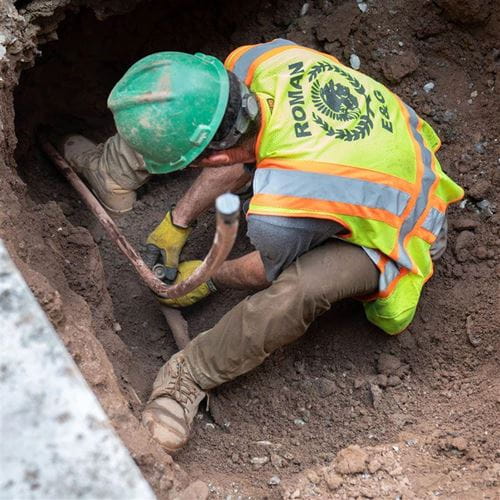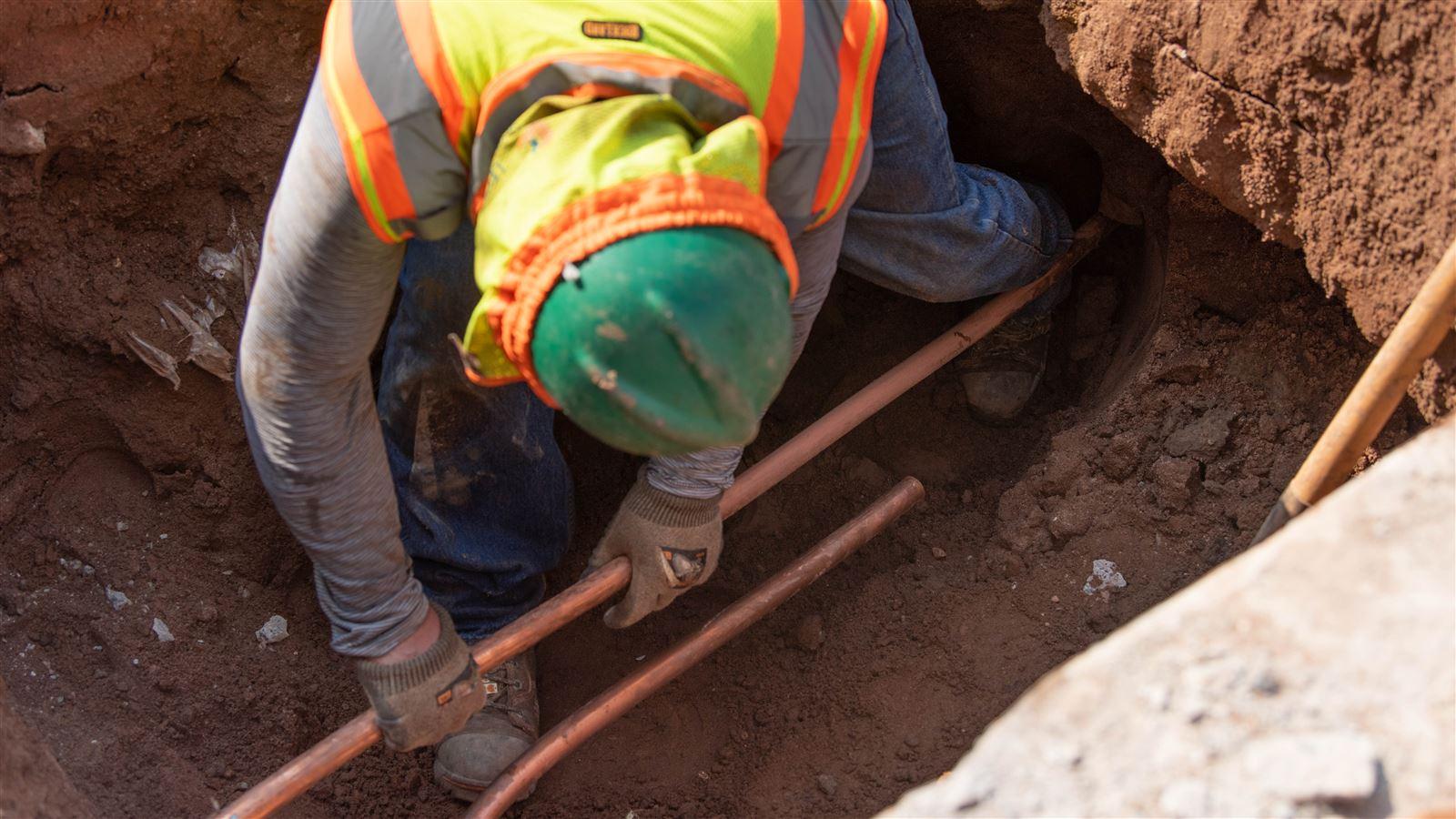Success Factors in Lead Service Line Replacement Programs
Lead in drinking water continues to pose a threat to the health of our communities. On October 8, 2024, the Biden-Harris Administration issued a final rule requiring drinking water systems nationwide to identify and replace lead pipes within 10 years. The Lead and Copper Rule Improvements (LCRI) also mandate stricter water testing and a lower action level threshold to protect communities from lead exposure.
Our webinar Rolling Out a Successful Lead Service Line Replacement Program: Lessons Learned and Future Regulations presented by Brian Farrelly and Brian Lubenow looks into these two LSLR programs in New Jersey. They cover topics including funding options, mandatory vs. voluntary replacement, technology and management tools, municipal and utility coordination, and construction lessons learned. The following is an overview of what they covered.
Newark
In 2022, Newark completed their LSLR program, having replaced over 23,800 LSLs in three years. Only full replacements were conducted, meaning LSLs were not left partially completed to be finished later. The program was both free and mandatory for customers and included extensive public outreach and strong advocation.
Trenton
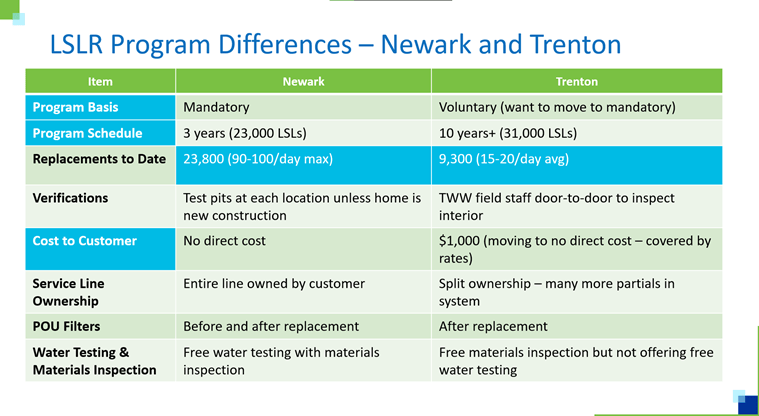
Funding
There are several opportunities for funding LSLR projects. The Bipartisan Infrastructure Law/ Infrastructure Investment and Jobs Act provides $15.7 billion for LSL replacements to the states through loans from the State Revolving Fund (SRF). Newark was funded through an $80 million loan from Essex County along with SRF loans and principal forgiveness. Many states will only be able to access these funds for public-side replacements.
Voluntary vs Mandatory Participation
With voluntary programs, the homeowner decides whether they participate or not. If they do choose to participate, they have some input to the schedule for their property—which often leads to delays and inefficiencies. This can result in inefficiencies for the program, specifically for the contractors who may need to remobilize more often. With Trenton’s voluntary program, most blocks had some homeowners opt out of the program, making full curb-to-curb road restoration less feasible as the road will have to be disturbed again when these services must be replaced by 2031.
Mandatory participation allows for increased efficiency by having all homeowners be required to participate by making having an LSL illegal in the city or township. The ability to control schedules leads to additional cost and time saving benefits by removing lead service lines on a block-by-block basis instead of home-by-home. Newark’s program shifted from a voluntary program to an accelerated mandatory program early in the process. This allowed them to increase efficiency and achieve completion of their LSLR program with up to 2,000 replacements conducted per month compared to the 200 per month from the initial voluntary program.
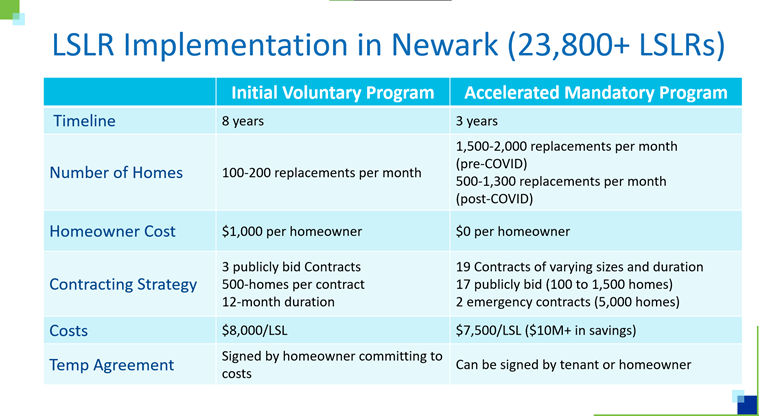

Understanding these factors is key to build out your own program.
Public Outreach
Software and other tools aid project teams, keeping them informed on their progress and help maintain accurate and consistent data. Pairing construction management software such as e-Builder with a geospatial inventory tracking tool, such as ArcGIS, can be used for real time reporting on the status of service lines, paving, water quality, costs, and more. Inspectors and contractors are able to use tablets and laptops to update information in the field.
These data collection and reporting tools were used to support the Address Lookup Tool on Newark’s LSLR website. Popular with water utilities and customers alike, the Address Lookup Tool allowed homeowners to get the status of their home, results from tests conducted there, upcoming schedules, contractor information, and other data.
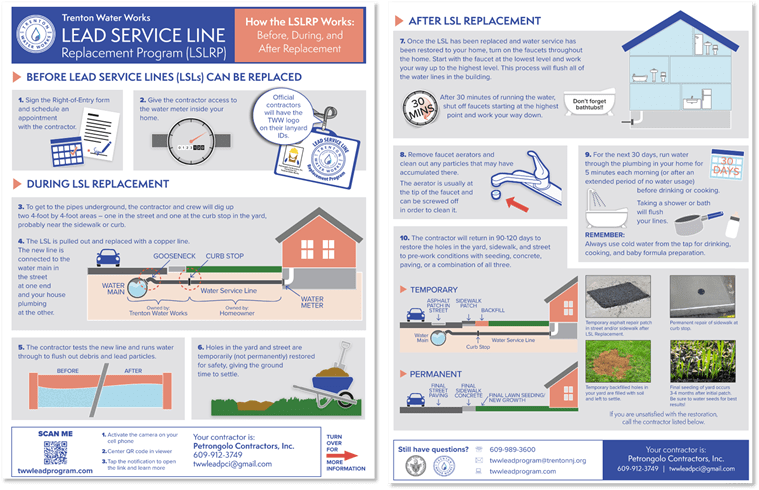
Newark's LSLR website provides homeowners the opportunity to review the program, register, see the status of their home using the Address Lookup Tool, and complete additional forms. Complaints can be easily logged and managed to then be addressed in a timely manner.
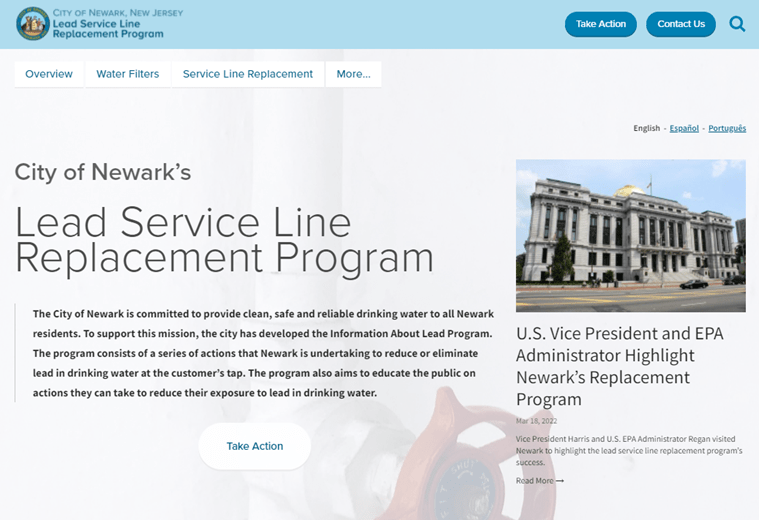
Program Management Tools
Software and other tools aid project teams, keeping them informed on their progress and help maintain accurate and consistent data. Pairing construction management software such as e-Builder with a geospatial inventory tracking tool, such as ArcGIS, can be used for real time reporting on the status of service lines, paving, water quality, costs, and more. Inspectors and contractors are able to use tablets and laptops to update information in the field.
These data collection and reporting tools were used to support the Address Lookup Tool on Newark’s LSLR website. Popular with water utilities and customers alike, the Address Lookup Tool allowed homeowners to get the status of their home, results from tests conducted there, upcoming schedules, contractor information, and other data.
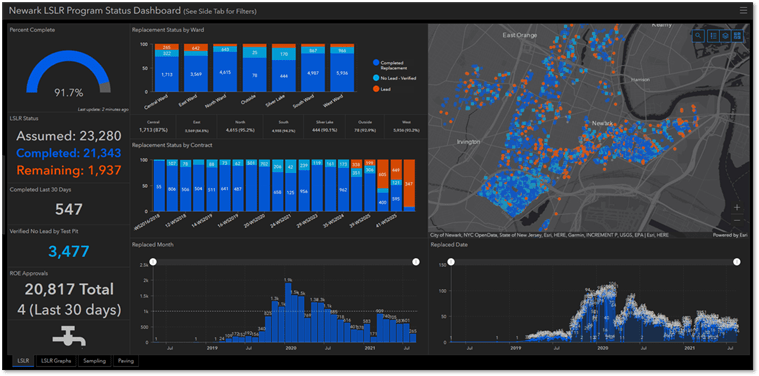
Municipal and Utility Considerations
Each municipality and utility have unique requirements regarding work hours, noise, plumbing permits, road restoration and more. Common questions that should be addressed before beginning an LSLR program are: Are licensed plumbers required? What does the plumbing permit process look like? Are there any related fees? What regulations must be followed for sidewalk and roadway restoration? What are the inspection requirements? Who are the contacts for all the different departments? Unanswered questions can result in delays and catastrophes down the line. “Having communication early, having it often, and identifying who are those key contacts and stakeholders is critical to the successful planning and implementation of a program,” said Brian Lubenow, environmental engineer.
Having communication early, having it often, and identifying who are those key contacts and stakeholders is critical to the successful planning and implementation of a program
Construction Challenges
There are many other challenges to prepare for that may be unavoidable. For example, these projects can overwhelm utilities and their mark-out processes. Coordinating mark-out processes will prevent contractors from being held up. In Trenton, lead was sometimes found inside the home downstream of the meter. If there was only a small amount, occasionally contractors would complete the work themselves, otherwise homeowners were informed of the remaining lead in their homes. Other times, contractors are unable to enter the home due to being denied by the homeowner or from missed appointments. Knowing how contractors will be compensated under those circumstances should be known before any of those issues arise. Additionally, identifying these inaccessible homes early will prove beneficial in the long run. Saving these homes for the very end may prove inefficient and problematic as time goes on.
For more on the Newark and Trenton LSLR programs, watch our Rolling Out a Successful Lead Service Line Replacement Program: Lessons Learned and Future Regulations webinar.
